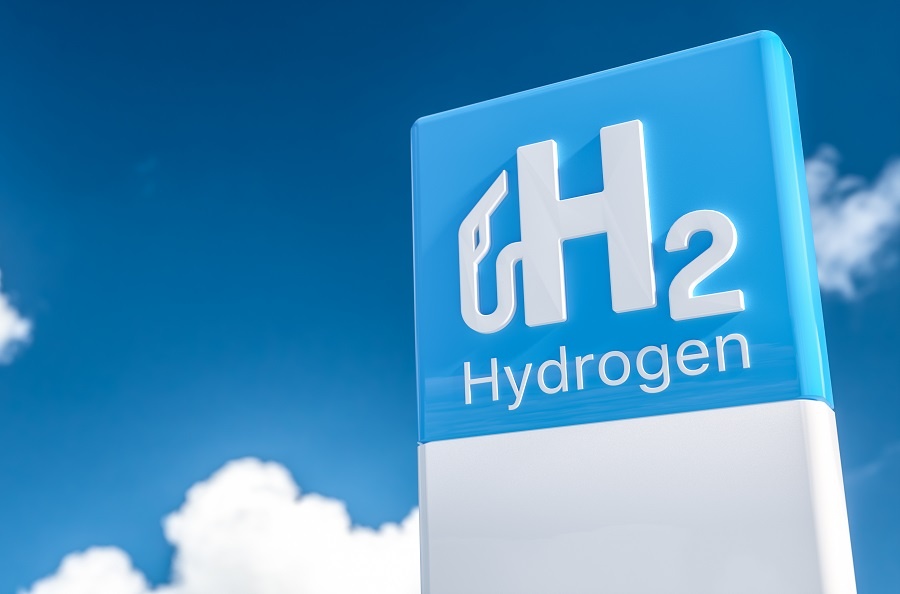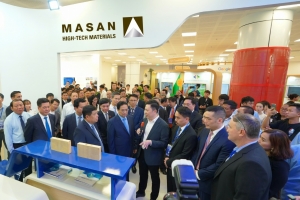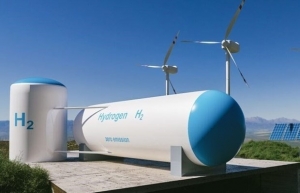Green hydrogen market pursued
Chey Tae Won, chairman and CEO of Korea’s SK Group, visited Vietnam last week to discuss cooperation in developing green hydrogen, a form of energy derived from renewable energy via water electrolysis technology. Vietnam is one of the fastest-growing nations in this area, but is still dependent on fossil fuels.
Vietnam can utilise the decarbonisation era to maximise the potential of existing renewable energy sources from the north to the south for green hydrogen production, Won explained. Currently, this ratio is zero, and Vietnam generates only minute quantities of grey hydrogen.
 |
| Green hydrogen market pursued, illustration photo/ source: Shutterstock |
“In Vietnam, SK is carrying out an investigation on establishing a value chain to provide an all-encompassing package, including liquefied natural gas, renewable energy, and hydrogen,” said Won. “In the future, we will also seek out viable initiatives, coordinating with partners in Vietnam to construct a green hydrogen ecosystem that encompasses all production, consumption, and export processes.”
According to Won, green hydrogen is a component of the strategy of many nations seeking to reduce their reliance on fossil fuels and attain carbon neutrality by 2050. Vietnam is currently comparable to South Korea before 2020, when the government implemented action plans for a future hydrogen economy.
However, South Korea’s hydrogen industry will not truly develop until the government provides a defined strategy and a financial support mechanism that specifies each priority content.
For example, from now towards 2030, South Korea will prioritise encouraging the localising of advanced technologies in hydrogen production, such as polymer electrolyte membrane electrolysis and electrolysis of water, while simultaneously establishing novel, unique technologies, such as anion exchange membranes and solid oxide electrolyser cells.
Vietnam will gain access to the renewables market as a result of the transition to green hydrogen, which will also leave a low carbon footprint.
Chey’s statement drew the attention of policymakers, investors, and corporations offering solutions for hydrogen technology, such as John Cockerill, a mechanical engineering group headquartered in Belgium.
“We may announce investments in Vietnam in the coming months,” said CEO Francois Michel. “It could serve as a hub for John Cockerill in Asia-Pacific, from which we will continue to develop its technology.”
John Cockerill has created approximately 30GW of renewable hydrogen capacity worldwide using electrolysis technology, and the group concentrates exclusively on large-scale initiatives.
Vietnam will progressively stabilise its production to export green hydrogen to potential consumers in the Asia-Pacific region, such as Japan and South Korea, as a result of the increasing demand for energy to support the economy and the country’s vast potential. However, experts said that these benefits are contingent on a stable and proactive energy policy framework.
Dr. Ha Dang Son, deputy technical director of the Vietnam Low Emission Energy Programme II of the United States Agency for International Development, at the conference on hydrogen at the end of August , said that the Vietnamese government had established a roadmap to develop green hydrogen, with emphasis not only on the significance of the transition to green hydrogen, but also on commercialising the technology at an affordable price.
“With the current foundation, Vietnam might consider developing an exclusive hydrogen network to satisfy new demand,” Son said.
He asserted that there are impediments, such as the cost of hydrogen techn, in addition to financial and technical barriers. In addition, the lack of policies and resolve for pursuing a green transition, particularly from conventional to green hydrogen, could be a significant obstacle. Delay in enacting a policy could impede the growth of the industry, Son added.
| Nguyen Chi Dung, Minister of Planning and Investment Green hydrogen is one of the primary variables accelerating Vietnam’s energy transition. For the hydrogenation process to be successful, businesses must be well-prepared and equipped with capital, technology, and high-tech human resources to organise production and business. Simultaneously, we must continuously learn and update from other nations, organisations, and businesses to optimise research and testing, thereby achieving high efficiency in the innovation process. Nguyen Sinh Nhat Tan, Deputy Minister of Industry and Trade The Ministry of Industry and Trade is drafting a hydrogen energy development strategy towards 2030. It outlines steps for expanding the hydrogen energy market in line with the fuel transition roadmap. It focuses on conducting experiments in a number of areas that can make use of existing infrastructure. It also looks ahead to promoting the production of green hydrogen to lower the economy’s carbon footprint and create a green hydrogen consumption market by 2050 based on market mechanisms and healthy competition. |
 | Vietnam hopes to promote energy transition from green hydrogen The green hydrogen ecosystem based on renewable energy is expected to contribute $40-$45 billion to Vietnam's GDP each year, according to the National Green Hydrogen Summit on October 28. |
 | Suitable policies, mechanisms needed for green hydrogen development Vietnam needs to promptly adopt appropriate policies and mechanisms to build infrastructure and value chains related to hydrogen, experts recommended at the National Green Hydrogen Summit: Energy Transition and Development of Green Hydrogen Industry in Vietnam on October 28 at the National Innovation Centre (NIC) at the Hanoi-based Hoa Lac Hi-tech Park. |
What the stars mean:
★ Poor ★ ★ Promising ★★★ Good ★★★★ Very good ★★★★★ Exceptional
Related Contents
Latest News
More News
- France's HDF Energy eyes integrated hydrogen renewable energy projects in Vietnam (April 17, 2025 | 11:19)
- Green growth targets more pivotal than ever (April 16, 2025 | 15:26)
- Green transition efforts aided via global partnerships (April 16, 2025 | 15:19)
- ADB works with MoF to mobilise more loans for sustainable development (April 16, 2025 | 11:54)
- Novaland pushes ESG roadmap for 2025–2030 (April 16, 2025 | 11:40)
- Support for green innovation with AI (April 16, 2025 | 09:01)
- Finnish expertise welcomed for Vietnam’s green development (April 16, 2025 | 08:00)
- Ecolean earns fifth platinum EcoVadis medal for sustainability (April 12, 2025 | 09:00)
- Clear processes sought for direct power purchasing (April 11, 2025 | 11:23)
- Investors highlight bankruptcy risk with FiT rules (April 11, 2025 | 11:07)



 Tag:
Tag:
















 Mobile Version
Mobile Version